Activities for September started on 2nd with the report of a seven-year-old elephant at Kasigau in Tsavo West
Activities for September started on 2nd with the report of a seven-year-old elephant at Kasigau in Tsavo West. We visited the area and found it in the same location it was sighted the previous day by rangers on patrol.

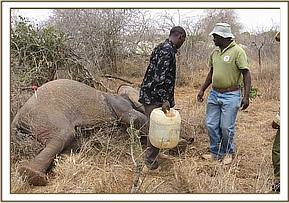

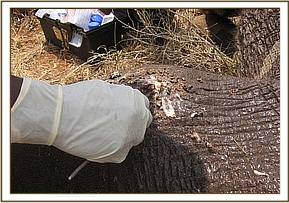

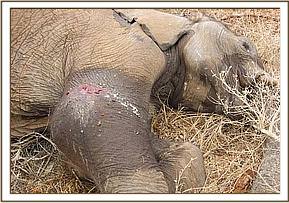
Thereafter, we were called to Oldonyo Wuas in the Chyulu Hills on 3rd to remove a snare from an elephant. The snare was reported to be on the neck. Before we left Tsavo, another bull was reported to have a spear injury on the neck in the same place. On the way, we were informed that both elephants had not been seen that day and the game scouts were out looking for them. Meanwhile, Amboseli reported a bull elephant with a spear wound on the left hindquarter that was being monitored by rangers. We therefore decided to visit Amboseli first while the search for the other two at Oldonyo Wuas continued.
We found the bull elephant still being monitored and proceeded to immobilise it.
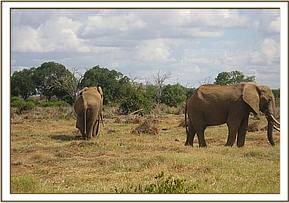


The elephant went down on the injured side and we had to turn it on the other side to be able to examine and treat the injury. This was achieved by use of two four-wheel vehicles. Treatment was successful and no complications are expected.

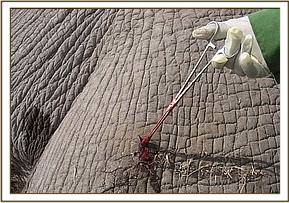



By evening, Oldonyo Wuas reported no success in tracking down the elephants. We visited the place the next day and by the aid of an aircraft, a herd of five elephant bulls was seen deep in thick bushes where they could not be pursued. We waited until evening when the herd came out to an area where immobilisation could be done.
In the group, there was none with a snare but we could see the one said to have a spear injury on the neck. However, when observed with binoculars, our opinion was different; it was not a spear injury. There was no injury on the neck, but the left ear pinna had two injuries, one puncture wound and another on the inner side. They were small injuries that could have recovered on their own but we decided to immobilise the elephant to help determine the cause.



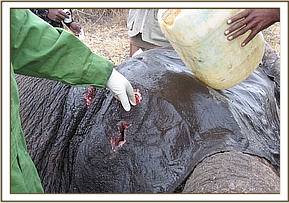



On our way back to Tsavo from Oldonyo Wuas and Amboseli, we were informed of a young zebra at Komboyo in Tsavo West with a wire snare on the left hind leg.

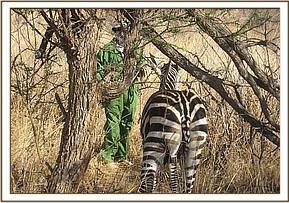
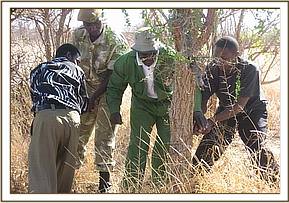


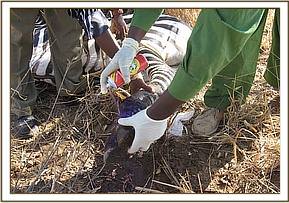

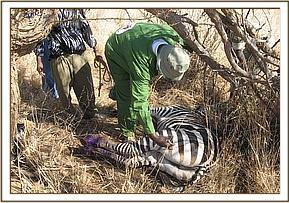
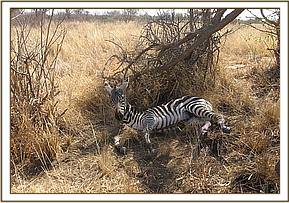

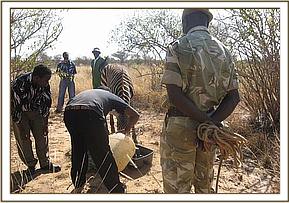

Currently, we are involved in an ongoing translocation of about four hundred elephants. One hundred and thirty two have already been removed from Ngulia black rhino sanctuary in an operation that took about 10 days. Thirty-eight were removed in June this year while 17 were driven out in October last year using a helicopter. Sixty-two were physically counted from the air remaining in the 63 Sq. Km sanctuary. The objective was to remove all the elephants to ease pressure on the habitat and reduce competition with the rhinos for water and browse. The operation was suspended on 21st September for the team to proceed to Shimba Hills to move 250 to northern Tsavo East. The Shimba operation is estimated to take about a month from the 29th of September. The remaining elephants in Ngulia will be removed at a latter date.
The Mobile Veterinary Unit operated by The David Sheldrick Wildlife Trust working with the Kenyan Wildlife Service and funded by Vier Pfoten.